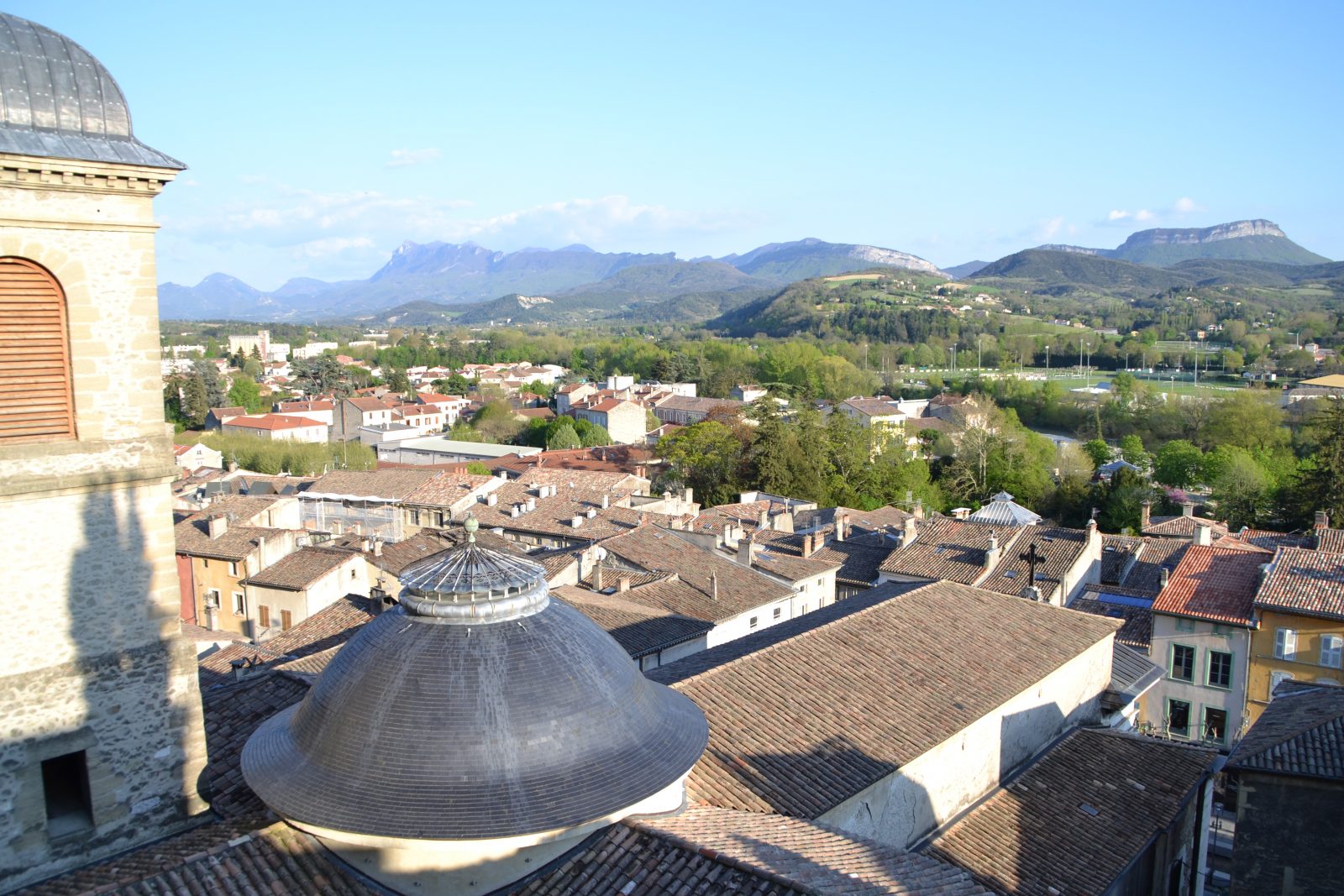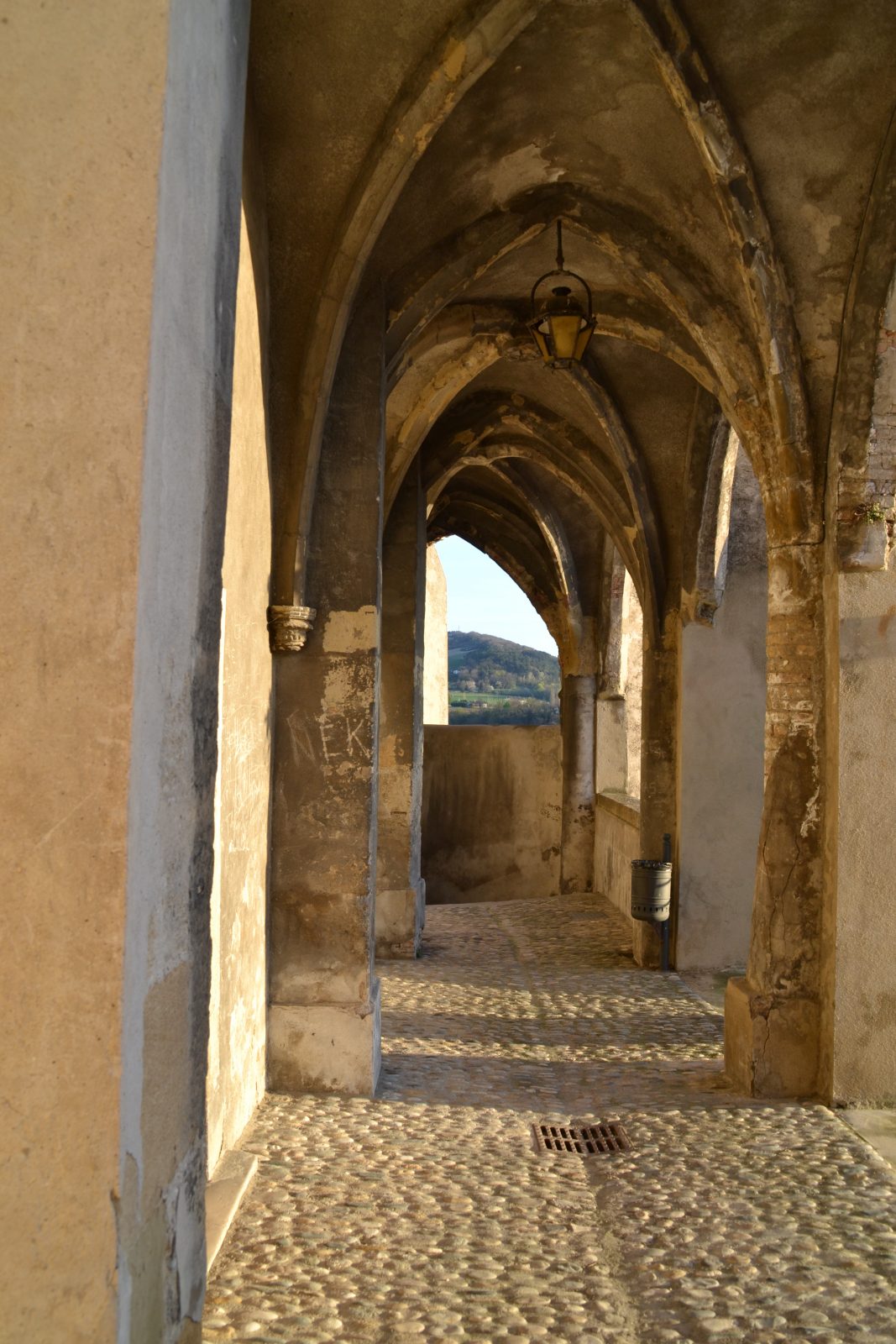Crest, a festive town with numerous cultural and sports-related activities in the heart of the Drôme Valley, is a gateway to Vercors. The medieval town was built in an amphiteatre shape at the foot of a rocky crest, looked down on by the Tower.
The town of Crest developed along an ancient Roman axis. The exact period of its origins is not known. It was first mentioned in 1120, in a letter written by Pope Calixtus II, who was visiting Crest, under the name "Crista Arnaudorum", the Arnaud Ridge.
Crest was named one of France's most beautiful detours in 2004. Its identity is based on its authentic calades and alleyways, covered passageways, architectural buildings bearing witness to its history, its keep and its shops.
The town is said to have been founded by the Arnaud family in the late 10th century, who built their castle on the rocky ridge. However, in 1145, half of the town of Crest passed into the hands of the bishops of Die, as a gift from the Arnauds. A few decades later, the Lords of Poitiers, future Counts of Valentinois, arrived in the region and sought to compete with the episcopal power. In gratitude for their support of the Princess of Marsanne, heiress of the Arnauds, against ecclesiastical power, they received the Arnauds' share, as well as the title of Counts of Valentinois and Diois. In 1188, they offered the people of Crest a charter of liberties. In so doing, they deliberately opposed the bishop of Die.
For more than a century and a half, the town endured the "Episcopal War", pitting the Counts of Valentinois against the Bishops of Die. In 1356, the Treaty of Lyon established the victory of the Poitiers, who now held the entire territory of Crest.
In the 15th century, the last Count of Valentinois, Louis II de Poitiers-Valentinois, died without an heir, and the town of Crest became royal property. It was ceded to various families, including the Grimaldi family (Prince of Monaco) in 1642.
In the 16th century, during the Wars of Religion, Protestants tried unsuccessfully to seize the fortress, where some of their followers were imprisoned.
In the 17th century, Louis XIII, on the advice of Cardinal de Richelieu, decided to dismantle the citadel as a threat to royal power. The keep was, however, preserved at the request of the notables and the population, but above all because the cost of destroying it was too high. The tower served as a prison until the end of the 19th century.
The town emerged ruined from the Wars of Religion.
At the end of the 17th century and throughout the 18th, Crest enjoyed a period of prosperity with the industrial development of cotton, cloth, wool and silk factories.
In the 19th century, the town's political history was marked by Napoleon III's coup d'état, when the Tour played its role as a prison for over 400 insurgent peasants.
At the same time, the town continued to prosper with the construction of new factories, some of which are still standing.
Today, the street names of the old town and its neighborhoods still evoke this rich economic past.
Read more









